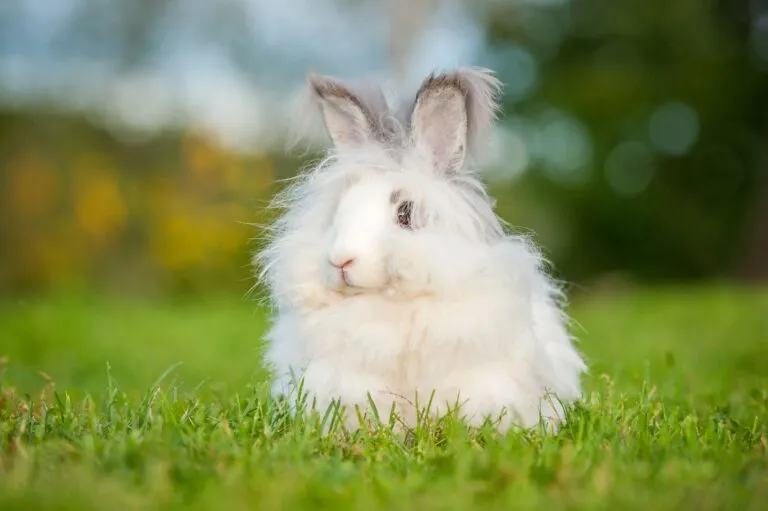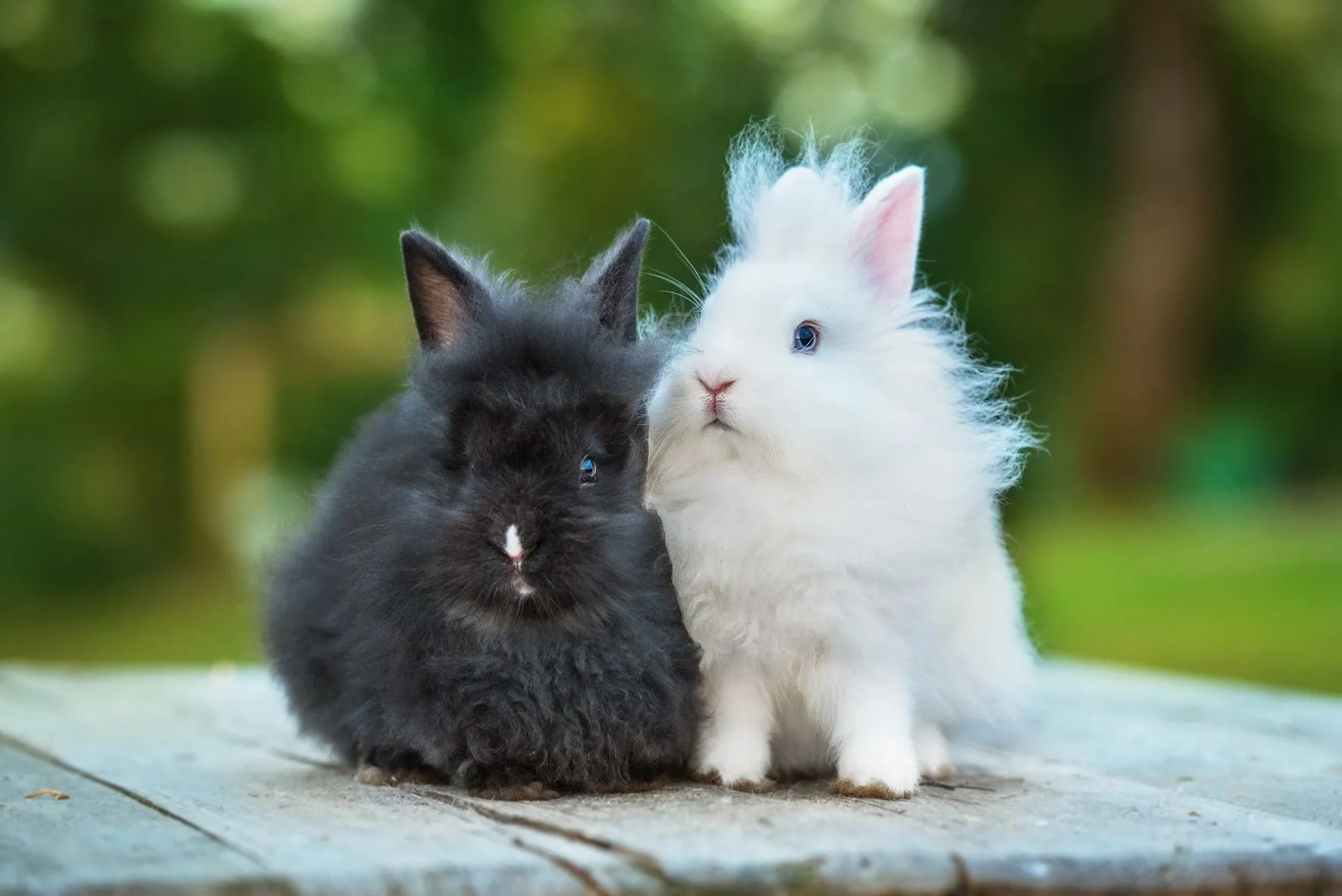Housing and care: Happy amongst fellow rabbits
Wild rabbits are very sociable and live in colonies. Even their tame descendants should definitely not be kept alone. They need fellow rabbits to play and cuddle with in order to be happy. The same applies for Angora rabbits.
Rabbits are very fertile
A female rabbit is sexually mature at three months and can have offspring several times a year. Three to four young are born in each litter.
You should definitely get your Angora rabbits castrated so they don’t breed, quite literally, like rabbits. Castration doesn’t just prevent unwanted offspring, but also has the advantage of castrated males being less involved in fights regarding territory and hierarchy.
You should neuter females too
Get females neutered too, because unneutered rabbits are prone to painful inflammation of the uterus and tumours. You can spare female Angoras such illnesses with the procedure.
Did you know?
Male rabbits are still fertile for four to six weeks following castration.
Angora rabbits and other pets
Under certain conditions, you can keep your Angora rabbit together with cats or even dogs. However, for safety reasons you should never let predator and prey encounter one another unsupervised.
Rabbits are often kept together with guinea pigs – but unfortunately the two species have little in common and don’t get on well at all with one another. Misunderstandings and aggression are inevitable.
Rabbit enclosure
Rabbits love to move and need plenty of space to hop, run and twist and turn. A large enclosure is an essential part of species-appropriate housing.
This is part of the basic equipment for a rabbit hutch:
The hutch and enclosure should of course be regularly cleaned so that your rabbit feels at ease.
You can find a large range of rabbit hutches and outdoor enclosures in the zooplus online store, where you can also find play tunnels and tubes for hiding.
Outdoor housing
Due to their lack of top coat, Angora rabbits are very sensitive to the cold and wet. Water can seep into the undercoat and even freeze in subzero temperatures – this can be life-threatening for rabbits. Hence, this rabbit breed is not suited to being kept outdoors in winter.
During the other seasons, make sure that the outdoor enclosure is in a windproof location. In summer, these woolly rabbits definitely need a shadowy spot to protect against the heat.
Find a detailed article on outdoor housing for rabbits here in the zooplus magazine.
How to shear Angora rabbits
Angora rabbits don’t moult, meaning that their hair doesn’t fall out of its own accord. Hence, they need to be shorn at regular intervals. The recommendation is four times a year.
You can get your vet to shear your rabbit or show you how it is done.
Before reaching for the shears, you should thoroughly brush your rabbit’s fur. Remove everything caught in the fur with a comb or brush: hay, straw or even dirt.
You can cut off the hairs with standard scissors and can also carefully shorten the ear tufts. If your rabbit fidgets during the procedure, you’re best off using trimming shears with a rounded tip to avoid injuries. You can also use clippers.
Find products for grooming small pets in the zooplus online store.
Important: Keep warm after shearing
Shorn rabbits freeze easily and can soon catch a cold. Hence, in cool weather you should put your Angora rabbit in an indoor hutch with straw and hay after shearing. Eating hay contributes to heat regulation.
In addition, you have to brush the fur daily otherwise it gets matted. Matted fur prevents heat regulation and is a magnet for parasites such as mites. A fly maggot (myiasis) infestation is also possible.
Regularly check the claws of your little hopper too. You should cut claws that are too long with clippers.

